A dive into the world of Black cinema available on Kanopy
**Please note some films mentioned in this post are not appropriate for all ages.**
EVPL is proud to have Kanopy – a free, digital streaming service for libraries. Watch great movies with the click of a button but without the monthly fee of most streaming services. The app – available to download on evpl.org – works on phones, desktops, Roku, and Amazon Firestick. As an EVPL user, you will have access to 20 films per month. This feature looks at some of what Kanopy has to offer, highlighting a particular filmmaker, actor, studio, genre, or theme.
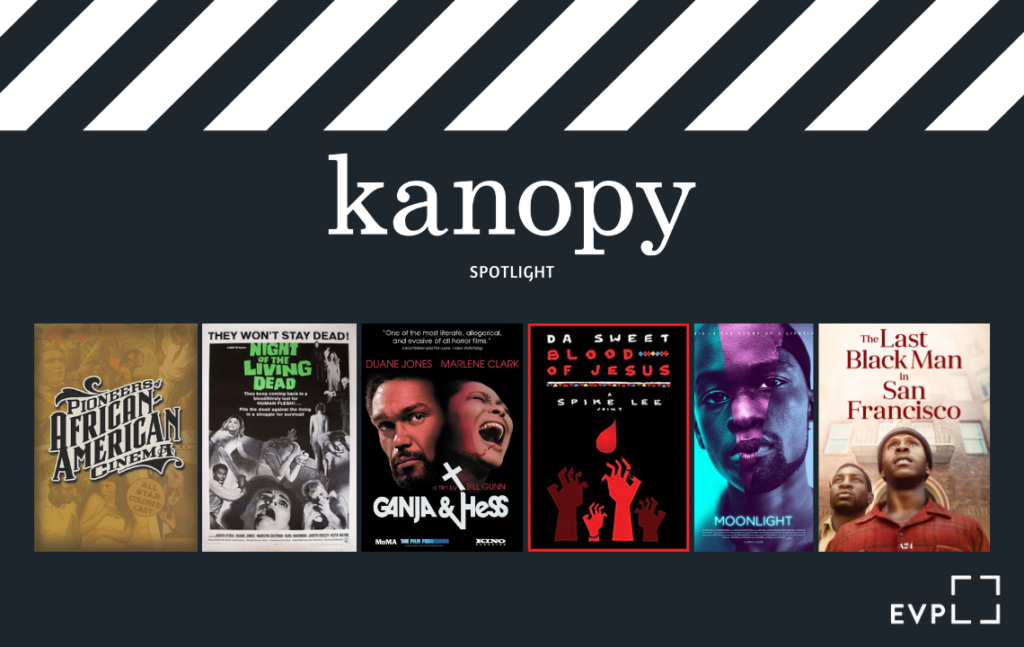
This time, the spotlight is on the history of African-American cinema in celebration of Black History Month, ranging from 1915 to the present day, from silent films to Spike Lee and Barry Jenkins. Some of these films feature Black lead actors and actresses, some were made By black filmmakers, others funded and distributed by Black investors, and many all of the above, but they each have important and influential work that are part of film history. Featuring both titles that have been included in previous Kanopy Spotlights and movies that have not yet been discussed, these show the incredible breadth and variety of talented black actors and filmmakers over the last one-hundred years.
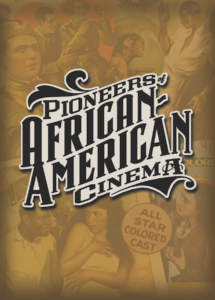 Pioneers of African-American Cinema (1915-1943)
Pioneers of African-American Cinema (1915-1943)
Director: Various
Runtime: Various
Rating: Unrated (Pre-Code or Ratings)
This entry is not a single film, but a curated collection by Kino Lorber of very early films that were made by African-Americans at every level: acting, directing, writing, producing, and even funding and distribution. These movies, known at the time as “race films,” have a visual and editing style completely different to the early Hollywood films of the same time, some of which had black casts in front of the camera but not behind the scenes. Some of these are silent films and need this striking visual language to do the heavy lifting of the storytelling.
Among the sixteen feature films and thirteen short films included is The Blood of Jesus (1941), written, produced, directed, and starring Spencer Williams, and considered the best and most important of the “race films.” Since many of these movies were shown in churches, there is often a religious component, such as James and Eloyce Gist’s Hell-Bound Train (1930) and their other films, showing the inevitable fate of those who went dancing or listened to jazz music, at least according to the evangelical filmmakers. Other films on the playlist include Body and Soul (1925) and many more by Oscar Micheaux, the first well-known and acclaimed African-American filmmaker, and documentary short films by award-winning novelist, Zora Neale Hurston.
Night of the Living Dead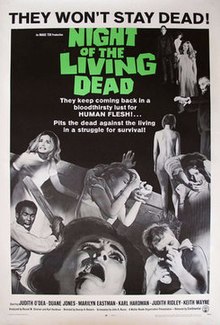 (1968)
(1968)
Director: George A. Romero
Features: Duane Jones, Judith O’Dea, Karl Hardman
Runtime: 96 mins.
Rating: Unrated (Contains Minor Gore)
As stark and powerful now as it was in 1968, Night of the Living Dead is a black and white, low-budget horror film that changed the genre forever. Starting with a normal brother and sister visiting their grandfather’s grave in an out-of-town cemetery, the danger escalates almost immediately when a corpse attacks them and one of them finds themselves in an old house in the middle of nowhere, huddled with other survivors. But when various men in the group vie for leadership by choosing which part of the house to hide in, it makes you wonder who is worse: the monsters outside or the humans inside…
Inspired by Richard E. Matheson’s vampires in the novel, I Am Legend, Romero wrote a treatment named Night of Anubis featuring living corpses originally called “ghouls,” and later expanded it into a screenplay named Night of the Flesh-Eaters with John Russo. Unfortunately, that name change also resulted in the film accidentally being put into the public domain; when they got a new title, they didn’t put a copyright symbol on the title card. The film made an immediate impact, not only for the shocking content for the time, but for having the strong male lead played by an African-American actor, Duane Jones, and its brutal, tragic ending that paralleled the assassination of Martin Luther King Jr. which happened the same year.
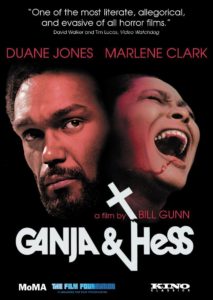 Ganja & Hess (1973)
Ganja & Hess (1973)
Director: Bill Gunn
Runtime: 110 mins.
Rating: R
Duane Jones’ second movie on this list, Ganja & Hess is part art film, part blaxploitation, and part supernatural horror. Jones stars as Dr. Hess Green, a professor specializing in African history, who is stabbed by his mentally ill assistant (played by the film’s director, Bill Gunn) with an ancient, cursed dagger. The assistant, George Meda kills himself immediately afterward, but Hess revives as a type of vampire, able to walk in the sun but craving blood, torn between his thirst and his Christian beliefs. The assistant’s wife, Ganja Meda (Marlene Clark) contacts and visits Hess, looking for her missing husband. Will she find out her husband’s fate or succumb to the vampiric will of Dr. Green…?
Asked to make a “black vampire film” by producers, African-American playwright/actor turned screenwriter/director Bill Gunn turned in something much stranger, something more personal and philosophical. Dealing with religion, sexuality, addiction, history, mythology, and more, Ganja & Hess can be very slow and deliberate at times, while overly shocking and provocative in others. The film was relatively unknown at the time of its release, but due to Jones’ connection with Night of the Living Dead, it has received a reappraisal in recent years and has become a cult film. Director Spike Lee called Gunn, whose only other film Personal Problems (1980) is also on Kanopy, “one of the most under-appreciated filmmakers of his time.” Speaking of which…
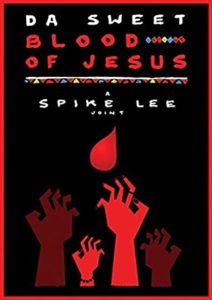 Da Sweet Blood of Jesus (2015)
Da Sweet Blood of Jesus (2015)
Director: Spike Lee
Features: Felicia, Joie Lee, Rami Malek, Stephen Tyrone Williams, Thomas Jefferson Boyd, Zaraah Abrahams
Runtime: 124 mins.
Rating: R
In 2013, Spike Lee went to the crowdfunding website, Kickstarter to launch a new independent project: a remake of Ganja & Hess named Da Sweet Blood of Jesus (no relation to the similarly titled Spencer Williams film from 1941). The plot is very similar to the original film, but Dr. Hess “Greene,” the professor turned vampire, is now played by Stephen Tyrone Williams, while Zaraah Abrams takes over the role of Ganja “Hightower,” the woman who finds herself drawn to Hess and his unusual ways. University of Evansville alum, Rami Malek also stars in a beefed-up supporting role as Seneschal Higginbottom, Hess’ butler and loyal servant to the very end.
Spike Lee‘s film is almost word for word accurate to the original, which is why the late Bill Gunn receives writing credit with Lee, but the director does give the film occasional modern updates and twists. A deadly encounter between Hess and a sex worker (played by Felicia Pearson of The Wire fame) is included in both films, but in Da Sweet Blood of Jesus, Hess discovers pills on her person that makes him worried his blood-sucking attack will leave him HIV positive. Except for small variations like that, this low-budget, fan-backed production mostly leaves the original work alone, focusing on bringing Gunn‘s story to a new audience who may not have the time or patience for a slow-paced, horror/art film from the early 1970s.
Moonlight (2016)
Director: Barry Jenkins
Features: Alex Hibbert, Janelle Monáe, Mahershala Ali, Trevante Rhodes
Runtime: 111 mins.
Rating: R
Moonlight focuses on one man at three critical points in his life, known under three names and played by three different actors. As a kid, “Little” finds himself living between two worlds: the horrible household provided by his drug-addicted mother (Harris) and the fantasy home life provided by Juan (Ali), a drug dealer who takes Little under his protection and gives him a place away from his mom and the other boys who chase him. As a teenager, Chiron is bullied every day at school, only finding peace through his best friend Kevin, who Chiron gradually realizes he is in love with. As an adult, “Black” (Rhodes) has his world shaken when Kevin (Holland) calls him out of the blue, wanting to catch up after so many years and so many things have happened…
Based on a play In the Moonlight Black Boys Look Blue written by Tarell Alvin McCraney, director Barry Jenkins and McCraney adapted it into a screenplay that closely examines many subjects, from being gay in a black community to drug addiction to the failure of schools on the issue of bullying, while always feeling like a character piece focused on Chiron. Partially based on the lives of both McCraney and Jenkins, our empathy for Chiron grows even as we understand why his experiences drift him further and further away from other people. It is heartbreaking to see the innocent boy become a hardened man, but not without some hope left. A personal but powerful film, it won Best Picture at the 2017 Academy Awards, the first film with an all-black cast and the first film dealing with LGBTQ+ issues to do so, as well as Best Supporting Actor for Mahershala Ali as Juan, Chiron’s childhood protector and mentor.
The Last Black Man in San Francisco (2019)
Director: Joe Talbot
Features: Danny Glover, Finn Wittrock, Jimmie Fails, Jonathan Majors, Mike Epps, Rob Morgan, Tichina Arnold
Runtime: 121 mins.
Rating: R
Jimmie Fails plays himself, or at least a version of himself, inThe Last Black Man in San Francisco. Fails lives with his best friend, Montgomery “Mont” Allen (Majors) and Mont’s blind grandfather (Glover), but spends his days fixing and renovating a house he neither owns nor has permission to be on the property, a giant Victorian-style mansion. Jimmie’s childhood home, he says was it was built from scratch by his grandfather, the first black man in San Francisco. When the current owners are evicted and the building sits empty, Jimmie and eventually Mont secretly move into the house. Everyone tells them it’s a bad idea, but just for once, Jimmie feels like he has something that’s his, that belongs to him, even as Mont begins to worry about his friend…
Our protagonist, Jimmie is heavily based on its lead actor and co-writer of the same name, who really did have a Victorian mansion as a childhood home that his family lost. Along with his best friend, Joe Talbot, they thought up the idea for the film as teenagers, a fantasy to reclaim the house (if only in fiction), that many years later became reality when it was funded by Kickstarter, with Fails as lead actor and Talbot as director. The film is as much of a love letter to San Francisco as Lady Bird is to Sacramento. From focusing on its early history with many Japanese residents until they were forced to internment camps during World War II to the present day where pollution in some parts is so bad that government officials wear hazmat suits while citizens walk on by in regular clothing, it doesn’t shy away from the darkness, including the gentrification at the heart of the story, but it also says that you cannot hate something “unless you love it.”
The Last Black Man in San Francisco even has a connection to the Evansville Vanderburgh Public Library. Co-Producer, Luis Alfonso De la Parra is the son of one of our best Storytime presenters, our very own Ms. Marisela!
—
Kanopy has also highlighted 11 films to check out during Black History Month. Be sure to check out these excellent films soon!
—
More Kanopy Spotlights
- Kanopy Spotlight: Taika Waititi
- Kanopy Spotlight: Dario Argento
- Kanopy Spotlight: George A. Romero
- Kanopy Spotlight: A24

Eric J.
With 8 locations throughout Vanderburgh County, EVPL is ready to discover, explore, and connect WITH you! We encourage you to uncover new things, revisit old favorites, and to engage with us along the way.
200 SE Martin Luther King Jr. Blvd
Evansville, Indiana 47713
Administration: ceo@evpl.org
Card & Account: circulation@evpl.org
Feedback & Ideas: marketing@evpl.org





